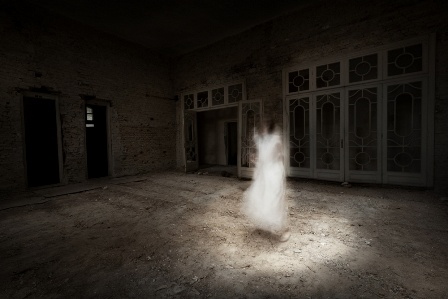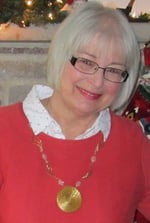A guest post by Bonnie Bright, Ph.D.
 Every once in a while, a term emerges on the horizon of my awareness which I find strikingly beautiful. In this case, it is the “image-making capacity of soul.” The language of soul is symbol, and symbol shows itself in image—including dream images, fairy tales and myth, or even art, Mary Harrell, Ph.D., explains in her recent book, Imaginal Figures in Everyday Life: Stories from the World Between Matter and Mind. Ultimately, this language of images is soul manifesting in a way people can understand, and without that image-making capacity, people can’t come to terms with the unconscious, Harrell insists.
Every once in a while, a term emerges on the horizon of my awareness which I find strikingly beautiful. In this case, it is the “image-making capacity of soul.” The language of soul is symbol, and symbol shows itself in image—including dream images, fairy tales and myth, or even art, Mary Harrell, Ph.D., explains in her recent book, Imaginal Figures in Everyday Life: Stories from the World Between Matter and Mind. Ultimately, this language of images is soul manifesting in a way people can understand, and without that image-making capacity, people can’t come to terms with the unconscious, Harrell insists.
 What inspired Mary to write the book, I wondered when I sat down with her to discuss it not long ago. Mary, a Jungian-oriented psychotherapist who earned her degree in the Clinical program at Pacifica Graduate Institute, began by sharing a an unusual and surprising story. When she was 13 years old, her mother died. Two years later, a self-described “intuitive, inward-leaning spiritual child,” she experienced a “figure” that came into her bedroom, an “incorporeal” being that became more and more embodied as she moved toward Mary in order to hand her a box. Mary knew that the box was meant to be a gift, she explains, but at just 15 years of age, she was understandably terrified. Instinctively, knowing her sister was asleep in another bed in the same room, Mary threw her arms around her sister. Since her sister had a real body, Mary believed that would stop that ethereal woman from approaching her—and indeed, the woman disappeared.
What inspired Mary to write the book, I wondered when I sat down with her to discuss it not long ago. Mary, a Jungian-oriented psychotherapist who earned her degree in the Clinical program at Pacifica Graduate Institute, began by sharing a an unusual and surprising story. When she was 13 years old, her mother died. Two years later, a self-described “intuitive, inward-leaning spiritual child,” she experienced a “figure” that came into her bedroom, an “incorporeal” being that became more and more embodied as she moved toward Mary in order to hand her a box. Mary knew that the box was meant to be a gift, she explains, but at just 15 years of age, she was understandably terrified. Instinctively, knowing her sister was asleep in another bed in the same room, Mary threw her arms around her sister. Since her sister had a real body, Mary believed that would stop that ethereal woman from approaching her—and indeed, the woman disappeared.
Mary had no context to help her understand how to deal with “ghosts,” nor anyone she could talk to about it, she told me—even though that ghostly woman continued to appear to her for 22 years. In order to cope with the terrifying visits, Mary “altered her consciousness” as she explains it, often by turning on lights or putting her arms around her husband in her 20s. All of this woke Mary up from that altered state which allowed the woman to appear, and eventually the woman stopped manifesting.
Mary began her doctorate at Pacifica in her 40s and discovered analytical (or depth) psychology offered a powerful lens which enabled her to investigate with “a sense of reality and scholarship” such unusual phenomenon that is often dismissed in the mainstream. She came to realize she wanted to spend her professional life studying about imaginal beings such as the one she had experienced for much of her adult life. Such beings live in the realm between matter and mind, Mary suggests. They are neither fully of the physical world nor of the mind, a realm which philosopher and scholar, Henry Corbin (and others), called the mundus imaginalis. One can enter that realm by allowing an altered state of consciousness.
There are seven stories in Mary’s book, Imaginal Figures in Everyday Life. At Pacifica she found a framework that could deepen the experiences she had, particularly through an understanding of Jungian archetypes. Archetypes have two ends to a spectrum, a physical end and a spirit end, according to Jung. Each of these had a place in Mary’s experience. The spirit end was the “angel” that visited her, and the physical end was the sensation Mary felt when the figure manifested in Mary’s room. Additionally, Mary visually perceived the figure as a Madonna who had a box for her.
Years later, Mary realized it was the image-making capacity of soul that allowed her to perceive the box, and to understand that it represented the gifts a mother would give her child. She credits her education at Pacifica with helping her not only understand the concept of archetypes, but also that each individual experiences archetypes in different ways. Mary holds the belief that, when working with the imaginal, one way to know that you’re not making something up is that there is a deep experience of resonance, a visceral feeling in your body that testifies there is something real at work there. As the stories Mary was writing and their archetypal connects began to resonate with her, Mary knew she could pierce a veil between worlds and make some sense out of the images in the form of a book for those individuals who are open to this invisible realm.
In the Age of Enlightenment, beginning around 1685, Mary told me, a new paradigm emerged in which “science became the great arbiter of legitimacy.” Science insisted certain “truths” might be legitimized if we looked at them through the lens of science, effectively objectifying whatever was under our regard. If we investigate something and it doesn’t fit under that model of reality, she states, it risks being cast aside as something we “made up.”
We are all prone to discount such experiences with the imaginal realm simply because they don’t fit the model of reality to which we tend to adhere, when in reality, in such events, we are experiencing something that lives in that cusp between conscious and unconscious. As a psychotherapist, Mary often invites clients to keep a journal of dreams because, as she points out, even though she and the client are speaking together through the conscious parts of themselves, the unconscious parts of each are also in dialogue. Individuals who have a sufficient amount of “psychological maturity” seem to take to depth-oriented work like a fish to water, she insists, and they discover tremendous richness if they’re willing to take advantage of doing the work.
On the other hand, I note that Robert Romanyshyn, author and now Professor Emeritus at Pacifica, has referred to Mary’s work as a “therapy of culture,” and I ask Mary how her ideas can be applied to our society.
You can’t pay attention to your own integrity, development, liminal experiences or dreams, she asserts, without also becoming open to how those manifest in the culture. When she wrote the stories in the book, for example, Robert Romanyshyn pointed out that she used language that embodied a deep “poetic sensibility.” If you look at the world through the lens of a poet instead of as a “psychologist,” then you are engaging a lens of the humanities, Mary suggests. Her work enabled her to look at that “very real” cultural phenomenon—that of school shootings— as a cultural dream, and to investigate what the psyche is saying about the collective. If we “go back” through an imaginal process and go deeper into the experience, we can actually change the world, Mary confirms.
Mary conveyed her own excitement about a turn she perceives that Pacifica has made toward action in the world—to change the ecological trajectory, or to transform social injustice. If each individual can actually hold a container in which they look at negative aspects of themselves, and require of themselves a certain integrity, this generates a sort of ripple effect, according to Jung. It lends a kind of stability to an individual, simply by being in a room and being centered. People can feel that, Mary insists. To look at psychotherapy with a poetic sensibility and acknowledgment here in the “middle realm” we inhabit (the same place where the dream of school shootings and other such disturbing events coalesce), then the culture itself can benefit, and not just individuals, she affirms. Jung suggested we work with images by staying with the image. The understanding and transformation derived from the process could take seconds, or it could take years, but if we look at an image with a self-reflective ego attitude until we “come to terms with” the unconscious, it will engender “more goodness, more community, and more understanding.”
Like many people who go to Pacifica, Mary notes, she was at a time of extreme transition in her life when she enrolled there. She recognizes how valuable a container it was for her to find and carry out her work, and cites all the faculty there for “a special kind of courage” for doing things others are not willing to do or to acknowledge in the wider world, and she perceives that they each are following a connection with “something deep within them.” Robert Romanyshyn and Veronica Goodchild, both depth psychologists and authors were especially “brilliant and tender teachers” she confides, and Pacifica itself seems to “collect” people who can participate in this “holding” process, in making a container in which this kind of deep and often life-changing work can be done. For some reason, on hearing this, my thoughts turn to the box proffered by ghostly woman so many years ago.
Listen to the full interview with Mary Harrell, Ph.D., here (Approx. 37 mins)

Mary H. Harrell, B.S., M.Ed., Ph.D., is the author of a new book, Imaginal Figures in Everyday Life: Stories from the World Between Matter and Mind. It comes as a result of research, personal experience, and professional accomplishments in the area of Jungian-oriented psychotherapy. Dr. Harrell, a licensed psychologist, earned her Ph.D. in clinical psychology from Pacifica Graduate Institute, and her M.Ed. in developmental reading from University of Delaware. She is Associate Professor Emeritus at State University of New York at Oswego, Curriculum and Instruction Department School of Education. She served as a K-12 teacher and reading specialist for three decades in Pennsylvania, Delaware, and California. During 8 of those years she also was a consultant and presenter of teacher effectiveness programs, classroom management skills, learning styles, and teaching strategies for Performance Learning Systems, Inc., in California. Learn more at www.MaryHarrellPhD.com
 Bonnie Bright, Ph.D., is a graduate of Pacifica’s Depth Psychology program, and the founder of Depth Psychology Alliance, a free online community for everyone interested in depth psychologies. She also founded DepthList.com, a free-to-search database of Jungian and depth psychology-oriented practitioners, and she is the creator and executive editor of Depth Insights, a semi-annual scholarly journal. Bonnie regularly produces audio and video interviews on depth psychological topics. She has completed 2-year certifications in Archetypal Pattern Analysis via the Assisi Institute and in Technologies of the Sacred with West African elder Malidoma Somé, and she has trained extensively in Holotropic Breathwork™ and the Enneagram.
Bonnie Bright, Ph.D., is a graduate of Pacifica’s Depth Psychology program, and the founder of Depth Psychology Alliance, a free online community for everyone interested in depth psychologies. She also founded DepthList.com, a free-to-search database of Jungian and depth psychology-oriented practitioners, and she is the creator and executive editor of Depth Insights, a semi-annual scholarly journal. Bonnie regularly produces audio and video interviews on depth psychological topics. She has completed 2-year certifications in Archetypal Pattern Analysis via the Assisi Institute and in Technologies of the Sacred with West African elder Malidoma Somé, and she has trained extensively in Holotropic Breathwork™ and the Enneagram.



